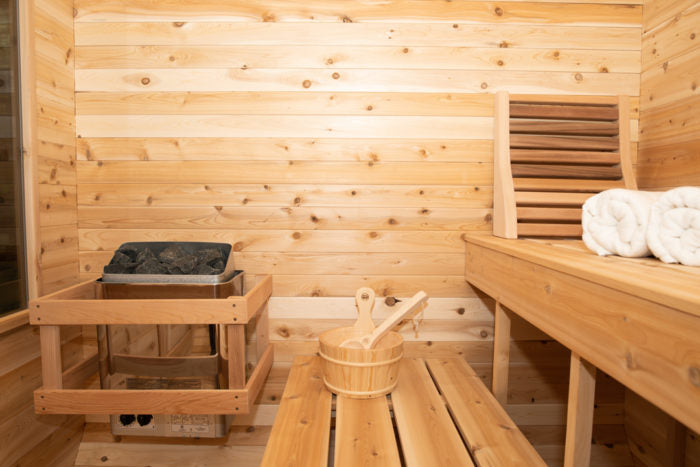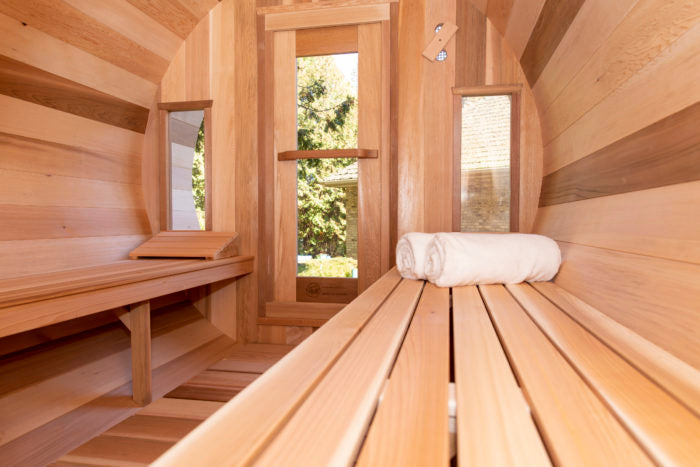The Greatest Guide To Traditional Sauna
The Greatest Guide To Traditional Sauna
Blog Article
What Does Traditional Sauna Mean?
Table of ContentsSome Ideas on Traditional Sauna You Need To KnowThe smart Trick of Traditional Sauna That Nobody is DiscussingThe Main Principles Of Traditional Sauna More About Traditional SaunaThings about Traditional Sauna
A lot of the weight shed in a sauna is water loss and is re-gained upon rehydrating. Without a doubt sauna can be an important component of a healthy and balanced weight loss program. To check out the differences in between standard and IR saunas, I will separate these right into verifiable, academic, and made differences.Hence, the hottest point in the saunawhich goes to the ceiling straight above the sauna heateris typically in between 185 and 190 F. Claims that a standard sauna exceeds 200 F is merely not true and not applicable for electrical saunas sold in the United States. The temperature for a far-infrared sauna is normally set in between 120 and 140 F; however, unlike the standard sauna, the goal in and IR space is not to attain a high temperature level.
Due to this, the temperature level distinction is practically unnecessary, considering that profuse sweating leads to both sauna kinds, but the approach of heating the body is different. In an IR sauna the bather will certainly feel hot and will certainly sweat profusely, yet at much reduced temperature levels (Traditional Sauna). Therefore, if the objective is to spend longer durations of time in the sauna, the IR sauna is a good option
When a traditional sauna has been properly heated up, the sauna wall surfaces are warm, the air temperature level has actually achieved established temperature level and the rocks are very warmed. As an interesting side note, the warmed wall surfaces and the rocks are discharging far-infrared heat, integrated with the warmed air, to create an "covering warm".
Getting The Traditional Sauna To Work

When the heat is attained, the components cycle on and off to keep the high temperature level. A lot of standard sauna individuals take pleasure in pouring water over the rocks to create vapor to elevate sauna humidity levels. The advantages of putting water over the rocks include: making the room more comfy, dampening the nasal flows, and allowing the use of aromatherapy by mixing crucial oils with the water.

When the power goes into the body, it creates the body temperature to increase and eventually causes sweating. In an infrared sauna it is essential for the emitters/heaters to stay on almost frequently. Considering that there is no mass of rocks to retain warm, the sauna will certainly cool if the emitters closed off.
As discussed over, the sauna bather in an infrared room intends to place himself in front of running emitters to get optimal take advantage of the warmth. The heating time for the 2 spaces can be really different, depending on how the rooms are used. For a typical sauna, a bather ought to enable 30-40 mins for the room to achieve a wanted temperature and to appropriately pre-heat the rocks.
The Basic Principles Of Traditional Sauna
A well created sauna will commonly attain a temperature level of 150-160 F in concerning 30-40 mins. For hotter temperatures, the space may require to heat for a longer duration.

Standard saunas tend to be larger (hence utilize even more electrical power) than infrared saunas, although traditional saunas are definitely readily available in one weblink and two individual sizes. For a two-person typical sauna, 5x6 or 5x7 size is most published here prominent. The leading bench can conveniently seat 2 or three people and is additionally long enough to rest during the sauna session.
The Traditional Sauna Ideas
The average cost per kWH of electrical energy in the united state is about $0.11, so a 4.5 kW heater will cost roughly $.50 to run for one hour, if the heating unit runs continually for one hour. Generally a sauna heater will run for 75% of the very first hour and 50% of subsequent hours on considering that the aspects cycle once the established temperature level is attained.

There is a rarely gone over difference in the social experience between the 2 spaces. While our culture has shed a few of the social benefit of the traditional sauna experience, it can be really socially fulfilling (Traditional Sauna). From family members time in the sauna, to heart-felt discussions with loved ones, to sauna partiesthe standard sauna experience can lead to intimate mingling
Traditional Sauna Can Be Fun For Everyone
Many higher end infrared click site spaces consist of tinted light treatment, sound systems and full-glass fronts.
Report this page